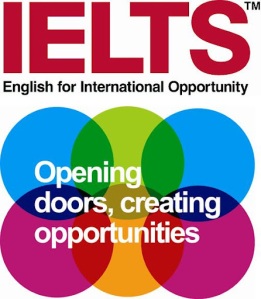TOEFL iBT Test Format
TOEFL Overview
The new TOEFL iBT takes about four hours. It is administered via a computer from a secure testing center network. Instructions are embedded within each section and there is no need for separate instruction tutorials. Unlike the computer-based format TOEFL iBT is not computer-adaptive, which means that the test itself covers the full range of skills. All test takers in a session at one test center receive the same test. Note taking is allowed during the whole exam. The test comprises of four sections – reading, listening, speaking and writing. All the four sections are taken on the same day.
The chart below gives general overview of the sections included in the TOEFL iBT, the number of questions and the timing for each section.
| Test section | Number and type of questions | Timing | Maximum points |
|---|---|---|---|
| Reading | 3-4 passages; 12-14 questions in each passage | 60 – 80 minutes | 30 |
| Listening | 4-6 lectures; 6 questions each 2-3 conversations; 5 questions each | 60 – 90 minutes | 30 |
| BREAK | 10 minutes | ||
| Speaking | 2 independent tasks 4 integrated tasks | 20 minutes | 30 |
| Writing | 1 integrated task 1 independent task | 20 minutes 30 minutes | 30 |
| TOTAL | 230 – 240 minutes | 120 |
Question types
Unlike the computer-based and paper-based TOEFL, some of the sections in TOEFL iBT contain integrated tasks. Those tasks measure the ability of the test takers to combine different language skills in order to communicate effectively and prove they are ready for academic success. For example, test takers may be required to read a short passage, listen to a part of a lecture and respond orally or in writing. In all parts of the test note-taking is allowed.
Choose a section for thorough description:
- TOEFL iBT Reading Section
- TOEFL iBT Listening Section
- TOEFL iBT Speaking Section
- TOEFL iBT Writing Section
TOEFL iBT Reading Section
(60 – 80 minutes)
This section tests the candidates’ abilities to understand academic texts and passages to succeed in university settings. The academic reading section aims at three main features:
- Reading to find information
- Tests the candidate’s ability to find information and key facts in the text by just scanning it
- Tests the candidate’s ability to increase fluency in reading
- Basic comprehension
- Tests the candidate’s ability to understand the general topic or main idea, the major points, important facts and details, contextual vocabulary and word references (words that refer to other words in the text)
- Tests the candidate’s ability to make deductions about what is meant in the text but not explicitly stated
- Reading to learn
- Tests the candidate’s ability to understand the organization and the purpose of the text/passage
- Tests the candidate’s ability to understand how the ideas are related
- Tests the candidate’s ability to categorize the information into charts or a summary in order to recall main points and important details
- Tests the candidate’s ability to make conclusions about the relationship between the ideas throughout the text/passage
TOEFL iBT Reading Section Organization
The reading section consists of 3 to 4 passages. It cannot be predicted whether the particular session will contain 3 or 5 texts. However, if the reading section contains more passages it would be at the expense of the listening part of the test and it will be containing fewer lectures to listen to and vice versa. Each text in the reading is about 700 words with 12 to 14 questions related to the text. Each text in the reading is about 700 words with 12 to 14 questions related to the text. The 1st passage stands alone and you will have 20 minutes to read it and answer the questions. The 2nd and 3rd passages share a total time of 40 minutes, so if you are a bit slow for the second passage you will not be stopped when the 20th minute ends and you could catch up with the third passage. You should be very careful about the time as the system will cut you off right after it ends.
The texts are taken from university-level textbooks readings with just minor changes and cover variety of different subjects and topics. The test takers are not expected to be familiar with the topics. The questions are designed in a way that all information needed for providing correct answer is present in the texts. The texts/passages are classified into three major categories:
- Exposition – explains a topic/subject
- Argumentation – presents a point of view about a topic and provide arguments to support it
- Historical
Sometimes, texts introduce several prospective or points of view about the topic which candidates should notice while reading. Test takers are asked at least one question to demonstrate their understanding of the general organization of the text. The text could be organized in several common types:
- Classification
- Compare and contrast
- Cause and effect
- Problem and solution
Sometimes, a definition of a difficult word or phrase in the text could be provided. The word or phrase that contains a definition is underlined and differently colored. Test takers have to click on the word so that the definition appears in the lower left-hand corner of the screen.
Type of questions
The questions in the Reading part are organized around three major question formats:
- Multiple-choice format – questions with four choices with a single answer
- Sentence insertion – questions asking to insert a sentence into the text (where the sentence fits best) at one of four provided choices.
- Reading to learn questions – contain more than four choices and more than one possible correct answer. Test takers are expected to sort information provided in the question into a category chart or summary. Summary and chart questions are worth more than 1 point. Those questions are marked with the exact number of points they are worth. Chart questions could be with five (worth up to 3 points) or seven options (worth up to 4 points). For the chart questions there is a possibility for gaining partial credit.
Remember
- The allotted time for the different parts of the reading is for reading the text and answering the questions.
- Test takers are not expected to be familiar with the topics presented in the reading part. All information needed for providing the correct answer is contained in the texts.
- Download our Reading Tips to improve your reading skills.
Reference: www.TOEFL.org
TOEFL iBT Listening Section
(60-90 minutes)
This section measures students’ abilities to understand spoken English in academic or everyday settings. In order to succeed in an academic environment, students must be able to listen to lectures and conversation and, most importantly, to understand the information provided orally. In TOEFL the academic listening is done for three main purposes:
- Listening for basic comprehension
- Students are tested whether they are able to comprehend the main idea of the lecture/conversation, the main points and important details related to the main idea but it is not required all the details to be comprehended
- Listening for pragmatic understanding
- The students are tested whether they can understand the degree to which the speaker is certain or uncertain
- To recognize what is the speaker’s purpose
- To connect and combine the information flow coming from two or more sources
- To understand the organization of the provided oral information
- To find the relationship between the presented ideas – compare/contrast, cause/effect, steps in a process
- To draw conclusions and make inferences on what is implied in the lecture/conversation
- To connect different pieces of information presented
- To recognize introductions and conclusions in the lecture or change of topic
TOEFL iBT Listening Section Organization
The Listening section measures the candidate’s ability to understand conversations and lectures in English. The section is divided into separately timed parts (2 or 3). Each part consists of 1 long conversation and two lectures. The test takers hear each lecture or conversation only once. Lectures and conversations are 3-5 minutes long. While listening the time is not running. The allotted time of 10 minutes for each section is only for answering the questions.
Academic lectures represent the kind of listening during university classes. Some of the lectures are entirely done by the professor, while in others students are engaged in the discussion by asking or answering questions.
The conversations in TOEFL iBT may occur between students and professor or teaching advisor or between students and university officials.
After each lecture or conversation, candidates have to answer some questions related to the lecture/conversation. The questions typically ask for the main idea, supporting details, and speaker’s purpose or attitude.
Type of questions
In the Listening section four question formats occur:
- Multiple-choice format with four question choices provided and only one correct answer
- Multiple-choice questions with 2 answers out of 4 possible choices
- Questions that ask test takers to order events or steps in a process
- Chart questions – require test takers to match objects or text to pre-set categories.
In some questions part of the lecture/conversation is repeated and the question is refers to this particular part of the lecture/conversation.
Remember
- You are allowed to take notes during all parts of the TOEFL iBT. You can use your notes when answering the questions.
- Test takers are not expected to be familiar with the topics presented in the lectures. Finding the correct answer is not related with previous knowledge about the topics, rather with the information provided during the lecture/conversation.
- During the listening the time is stopped. Then the time should not bother you. Time is running only when answering the questions.
- Download our Listening Tips for improving your listening skills.
Reference: www.TOEFL.org
TOEFL iBT Speaking Section
(Approximately 20 minutes)
The speaking section in TOEFL iBT comes right after the 10-minute break. TOEFL iBT Speaking section is intended to measure test takers’ ability to speak about a variety of topics. Each question should be answered as completely as possible within the given time. In total, the section consists of six questions divided into two types – independent speaking tasks (question 1 and 2) and integrated speaking tasks (questions 3, 4, 5 and 6).
In academic settings students must be able to:
- Give adequate responses to questions
- Take part in academic discussions with other students or professors
- Participate in everyday conversations
- Express their opinion about discussed subjects
- Summarize and orally reproduce information read in textbooks or listened to in the classroom
- Communicate with university officials in libraries, sport centers, housing office, bookstore and etc.
TOEFL iBT Academic Speaking section tests students’ ability to speak effectively under abovementioned criteria.
TOEFL iBT Speaking Section Organization
The speaking section is approximately 20 minutes long and includes six questions. During all the section, test takers are allowed to take notes on a piece of paper and use their notes when speaking. For each question students are given short time to prepare and organize their responses. Test takers are required to wear headphones in order to receive instructions, listen to the questions and be isolated from listening to the others’ responses. Test takers provide responses orally, speaking into a digital microphone. Responses are not kept on the computer, but the records are immediately sent to the ETS’s Online Scoring Network.
Independent speaking tasks
Question 1 and question 2 ask test takers to speak about familiar topics. Students are expected to provide an answer based on their own ideas, opinions and experience. The answers should be clear and coherent. After hearing the questions students are given 15 seconds to prepare their responses and 45 seconds to speak.
Preparation time: 15 seconds
Response time: 45 seconds
Integrated speaking tasks
(Read/Listen/Speak) Questions 3 and 4 ask students to read a short passage first, listen to a conversation or part of a lecture related to the passage they have read and speak in response to a question. Information from both reading text and listening should be combined into the response. Test takers have to use reasons and examples to support their answer. For reading the passage, test takers are allotted 45 seconds. They also have 30 seconds to prepare their response to the question and 60 seconds to speak.
Reading time: 45 seconds
Preparation time: 30 seconds
Response time: 60 seconds
(Listen/Speak) In questions 5 and 6 students will first listen to part of a conversation or lecture. Further, they will be given the question and 20 seconds to prepare their response. The speaking time for those questions is set at 60 seconds.
Preparation time: 20 seconds
Response time: 60 seconds
Remember
- Note-taking is allowed during all sections in TOEFL iBT. Notes could be very helpful especially for the speaking section. Please, download our note taking strategies.
- Speak clearly and coherently. Raters should be able to understand you and follow your thought.
- Provide answers that are right to the question. Do not speak about unrelated topics. Try to stick to the main point of the question.
- Support your answers with details, reasoning and examples based on your ideas, experience (for the independent tasks) or based on the information given in the passages or conversations/lectures (for the integrated tasks).
- Download our Speaking Tips for improving your speaking skills.
Reference: www.TOEFL.org
TOEFL iBT Writing Section
(50 minutes)
TOEFL iBT Writing section measures students’ abilities to communicate effectively in writing in academic settings. Students must be able to present their ideas clearly and in an well-organized manner. Responses are typed into a computer and automatically sent to the ETS’s Online Scoring Network for evaluating and scoring.
TOEFL iBT Writing section includes two writing tasks:
Task 1: Integrated writing task (20 minutes)
(Reading/Listening/Writing) In the integrated writing task test takers have 3 minutes to read a short text at about 230-300 words. The text is on an academic topic. When the time finishes the reading text disappears. The reading text is followed by a lecture (listening) on the same topic presented from different perspective. The listening passage has the same length – 230-300 words. When the listening finishes the reading text appears again with the question that test takers are expected to answer. A writing box on the screen is provided for typing the response. Students write a summary of the important points in the listening and explain how those are related to the reading text. During writing the reading passage is on screen and students can refer to it every time they wish to. The writing response should be between 150 and 225 words in length. There is a word counter that counts the words in the response.
Task 2: Independent writing task (30 minutes)
(Essay)In this task students are asked to write an essay that expresses and supports their opinion on a certain topic. The support should be based on test takers’ own knowledge and experience. This task is the same as the one in the paper-based and the computer-based TOEFL. The length of an effective essay should be minimum 300 words.
Remember
- Listening during the independent writing task is played only once. Effective note taking could help to list important facts from the listening and avoid forgetting them. Download our effective note taking strategies.
- Both tasks are timed independently – 20 minutes for the integrated writing and 30 minutes for the independent writing.
- Allot some time to plan the outline of your essay. Scratch down some notes.
- Do not just list your opinion or choices. Use reasons, examples and details to support your opinion/choice.
- Use linking words to connect ideas and help the reader follow your thoughts.
- Download our Writing Tips for improving your writing skills.
Reference: www.TOEFL.org
Taken from http://i-courses.org/









